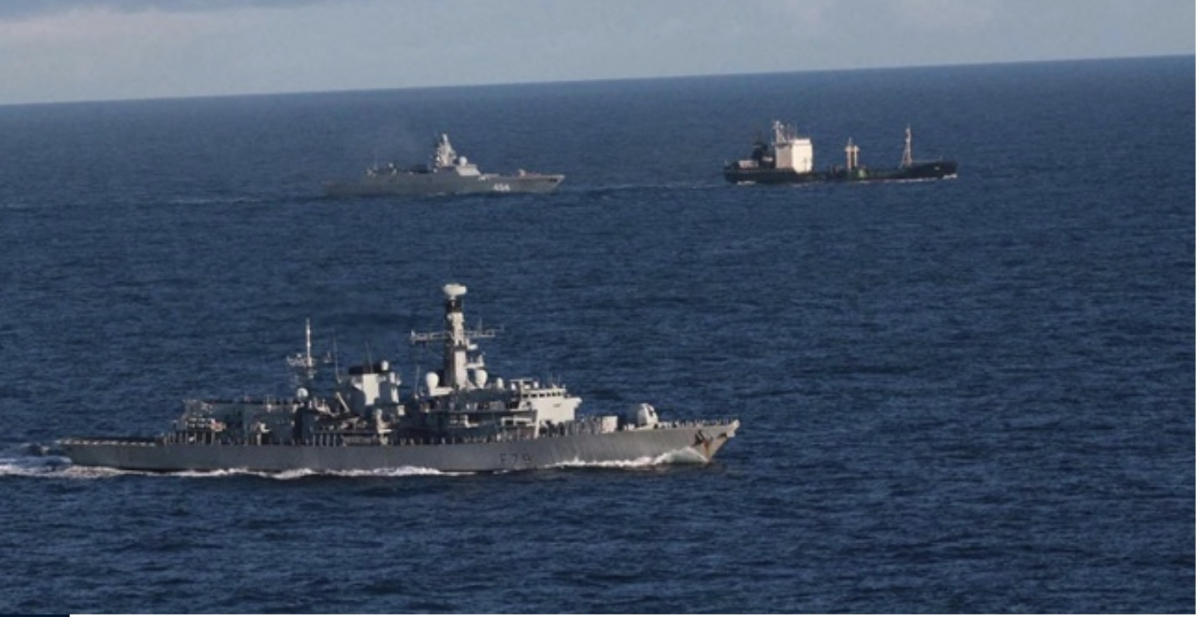Hypersonic missiles on board "Admiral Gorshkov" frigate for extended operational cruise.
The Russian frigate, Gorshkov
The Russian frigate, Gorshkov, set sail from the Northern Fleet's main base of Severomorsk towards the Atlantic on a mission that will take it through the Norwegian Sea and into the Mediterranean. The ship was spotted by a P-3 Orion maritime patrol aircraft from the 333rd Squadron of the Royal Norwegian Air Force during its voyage through the Norwegian Sea. Along with the Gorshkov, the Dubna-class Kama tanker is also making the voyage, providing vital logistical support to the frigate as it conducts its mission.
The Gorshkov is now heading for the Mediterranean, where it will serve as the command vessel for the Russian Navy's operational group in the region. During the deployment, the frigate will probably replenish fuel and supplies at ports of friendly countries, including the only foreign base of the Russian Navy in Tartus, Syria, where the 720th Material and Technical Provision Point is located. It will also certainly become a unit of interest for observation by NATO maritime groups operating in the area.
The Gorshkov will not be entering the Black Sea, as Turkey has closed the Bosporus Strait to ships involved in the conflict. After its deployment in the Mediterranean, the frigate will continue its journey to the Indian Ocean. This voyage will take it through the Suez Canal and into the Red Sea, where it will likely conduct maritime surveillance and reconnaissance missions.
Tsirkon hypersonic cruise missile system
The Gorshkov is equipped with the 3M22 Tsirkon hypersonic cruise missile system, which is manufactured by the Rieutov-based NPO Mashinostroyeniya company, part of the state-owned Tactical Missiles Corporation. The 3K22 Tsirkon missile is expected to reach a hypersonic velocity of Mach 8 (about 9,800 km/h), as confirmed by its state trials. Its range is estimated at more than 500 km (some studies suggest as much as 1,000 km).
The Gorshkov is the lead ship of the Project 22350 class of frigates, which are the first large (5,400 tons of full displacement) Russian Navy surface ships designed after the collapse of the Soviet Union. Their design was developed by the "Northern Design and Construction Bureau" of St. Petersburg. The frigates are being built in the "Northern Shipyard" in St. Petersburg (part of the United Shipbuilding Corporation). Currently, the Russian Navy has two frigates of this class. The second one, Admiral Kasatonov, joined the Northern Fleet in July 2020, while the third, Admiral Golovko, began sea trials last November.
The most advanced and powerful ships in the Russian Navy
In addition to the Tsirkon missiles, the Gorshkov is armed with 16 Kalibr-NK system (3M14 long-range cruise missiles, 3M54 anti-ship missiles) and 91RT2 Otvet anti-submarine rockets, as well as 3M55 Oniks supersonic universal missiles, 9M96 Poliment-Redut anti-aircraft system (32 medium-range missiles 48N6E2 or 9M96 or 128 short-range missiles 9M100 in quadpacks), Paket-NK system with MTT torpedoes and M-15 rocket anti-torpedoes (2x4 SM-588 launchers), 130mm AK-192M Armat cannon, two CIWS Palash systems. The frigate has a hangar for the Ka-27PL ASW helicopter. It is one of the most advanced and powerful ships in the Russian Navy, and its voyage to the Atlantic and beyond is a significant demonstration of Russia's naval capabilities and intent.

